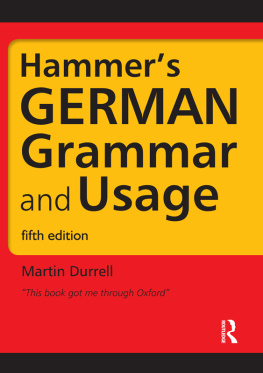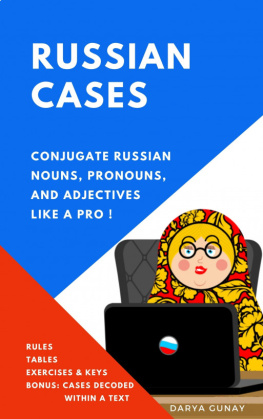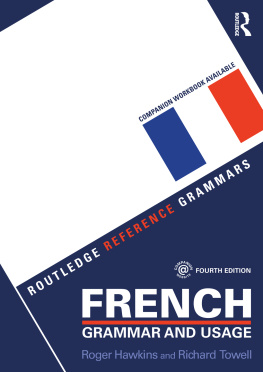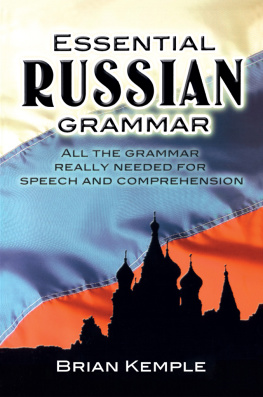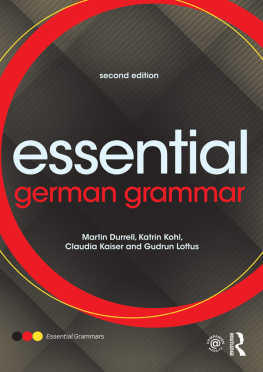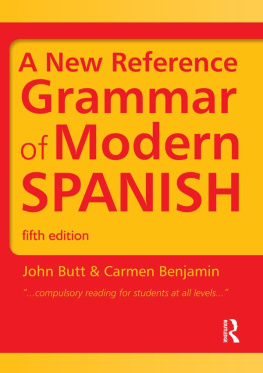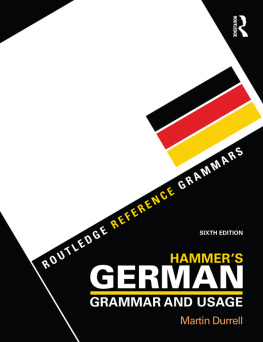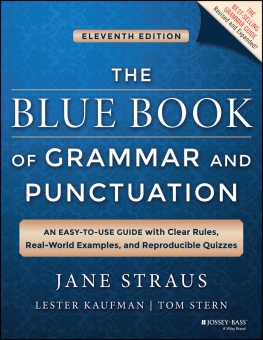Hammers
GERMAN
Grammar
and Usage
fifth edition
Hammers
GERMAN
Grammar
and Usage
fifth edition
Martin Durrell

First published 1971
This edition published by Routledge
2 Park Square, Milton Park, Abingdon, Oxon OX14 4RN
711 Third Avenue, New York, NY, 10017, USA
Routledge is an imprint of the Taylor & Francis Group, an informa business
Copyright 1971 and 1983 the estate of A.E. Hammer
Revisions for the second edition 1991 Arnold
Revisions for the third edition 1996 Arnold
Revisions for the fourth edition 2002 Arnold
Revisions for the fifth edition 2011 Taylor & Francis
All rights reserved. No part of this book may be reprinted or reproduced or utilised in any form or by any electronic, mechanical, or other means, now known or hereafter invented, including photocopying and recording, or in any information storage or retrieval system, without permission in writing from the publishers.
The advice and information in this book are believed to be true and accurate at the date of going to press, but neither the authors nor the publisher can accept any legal responsibility or liability for any errors or omissions.
British Library Cataloguing in Publication Data
A catalogue record for this book is available from the British Library
ISBN 13: 978 1 444 12016 5 (pbk)
List of Tables
Abbreviations and Points for the User
Points
- Lists of words are in general alphabetical, unless it appeared more helpful to the user to present them in a different order.
- Where required, the plural of a noun is indicated within brackets after the noun, e.g. das Lager (-), i.e. die Lager; der Hut (e), i.e. die Hte, etc. (-en, -en) or (-n, -n) indicate a weak masculine noun, e.g. der Mensch, des Menschen, die Menschen (see 1.3.2).
- If necessary, a stressed syllable in a word is indicated by the mark placed before the stressed syllable, and/or by the use of bold type, e.g. dieDoktoren, unterschreiben. Where it is required, a stressed word in context is shown by underlining, e.g. Wie bist du denn gekommen?
- Sentences used for illustration which are ungrammatical in German are indicated by an asterisk, e.g. *Jedoch dann ist er nicht gekommen.
Abbreviations
In principle, abbreviations have been kept to a minimum. The following have been used where required by considerations of space.
abbrev. | abbreviated |
acad. | Academic |
A., acc. | Accusative |
arch. | archaic |
Austr. | Austrian |
aux. | auxiliary |
Bav. | Bavarian |
ch. | chapter |
cl. | clause |
coll. | colloquial |
conj. | conjunction |
D., dat. | dative |
elev. | elevated |
esp. | especially |
etw. | etwas |
fem. | feminine |
form. | formal |
G., gen. | genitive |
indic. | Indicative |
inf. | informal |
jd. | jemand |
jdm. | jemandem |
jdn. | jemanden |
lang. | language |
lit. | literary |
masc. | masculine |
N., nom. | nominative |
neut. | neuter |
N.G. | North German |
obs. | obsolete |
occ. | occasionally |
o.s. | oneself |
part. | participle |
pej. | pejorative |
pl. | plural |
prep. | preposition |
S.G. | South German |
sb. | somebody |
sg., sing. | singular |
sub. cl. | subordinate clause |
sth. | something |
Sw. | Switzerland |
techn. | technical |
vb. | verb |
vulg. | vulgar |
Preface to the Fifth Edition
The fourth edition of Hammers German Grammar and Usage appeared in 2002, and it has become clear from comments and suggestions made by the numerous users, both teachers and learners, who have been kind enough to contact me that a revision would now be timely. However, it was equally clear from these comments that a thoroughgoing revision of the basic structure of the work would not be welcomed. Thus, the relatively traditional layout based on the parts of speech has been retained, since alternative approaches, however theoretically justifiable, would be unfamiliar to many potential users and could detract from the usefulness of the work for everyday reference. Similarly, considerations of the user prevailed again, despite my own reservations, in the decision to retain a separate chapter on expressions of time, although consistency would suggest that the material dealt with there really belongs elsewhere, e.g. in the chapter on adverbs or the chapter on prepositions.
The revision is founded, like all previous revisions, on the basic principle that the work should be a comprehensive descriptive account of modern German for the use of the advanced learner or student of the language whose first language is English or who can approach German through English, since I am aware that the book has been widely used in other countries. This aim implies that it should cover the whole gamut of variation in usage within modern German, not simply the most prestigious written form which is still, unfortunately, used too exclusively in many teaching manuals, even when they purport to present examples of spoken language. Thus, considerable attention has been paid to giving information on usage in registers other than formal writing or literature, and details given on everyday speech. This also reflects the greater emphasis paid to oral skills, both active and passive, in modern language teaching. The distinction between common spoken usage and the norms of formal writing norms is particularly marked in German, and clear indications are given in this work as to where spoken and written usage diverge, as also in respect of forms which, although they are considered to be grammatically correct, are felt to be stilted outside formal writing (and sometimes even there). Similarly, forms which are frequently heard in everyday speech but widely thought of as non-standard or incorrect are included here, as the foreign learner will encounter them every day, but with a clear indication of their status. Important regional variants within standard German are also included and marked accordingly, especially those commonly found in Swiss or Austrian usage, but purely dialectal forms have been ignored.
Next page
